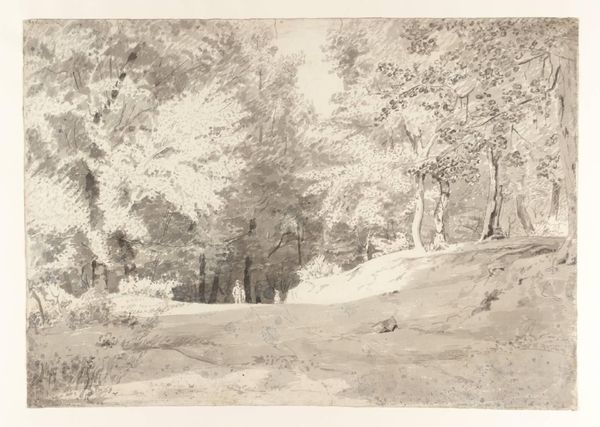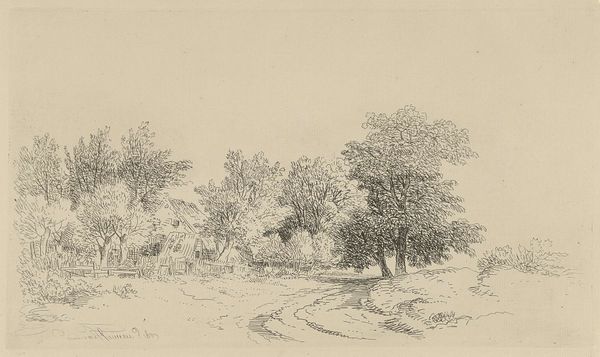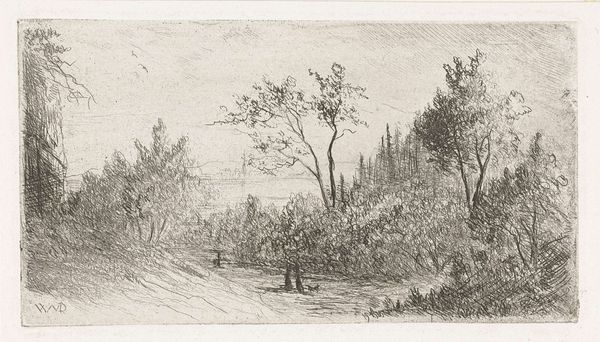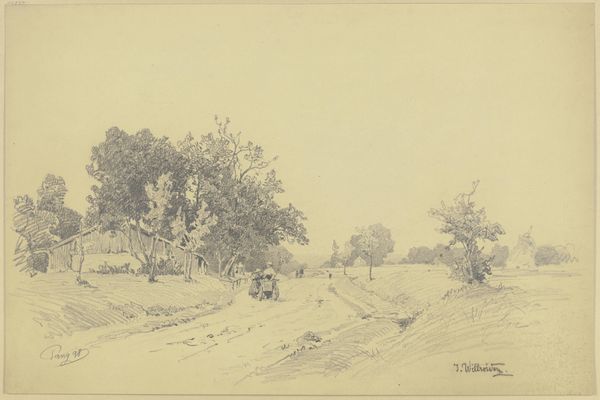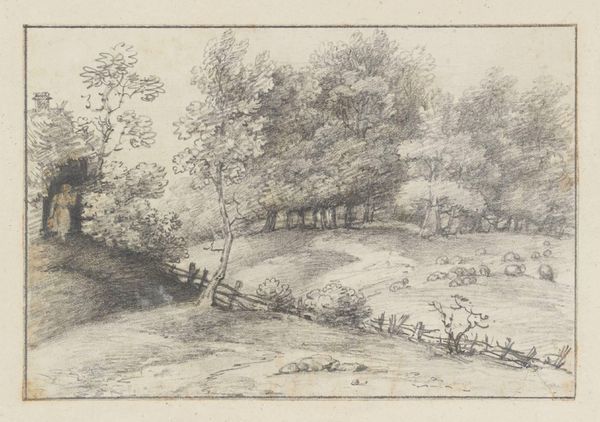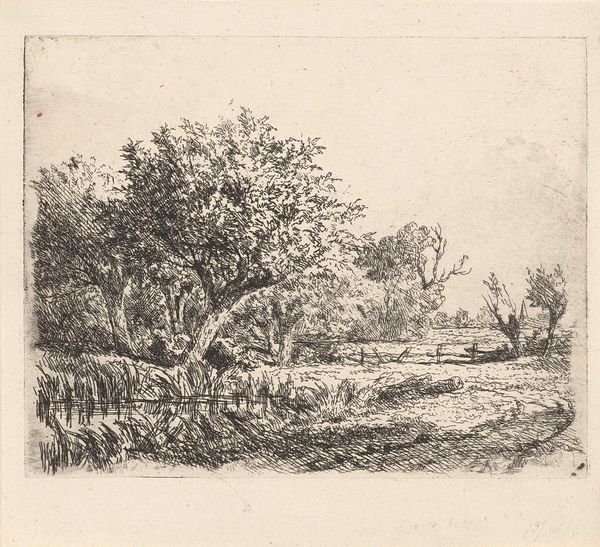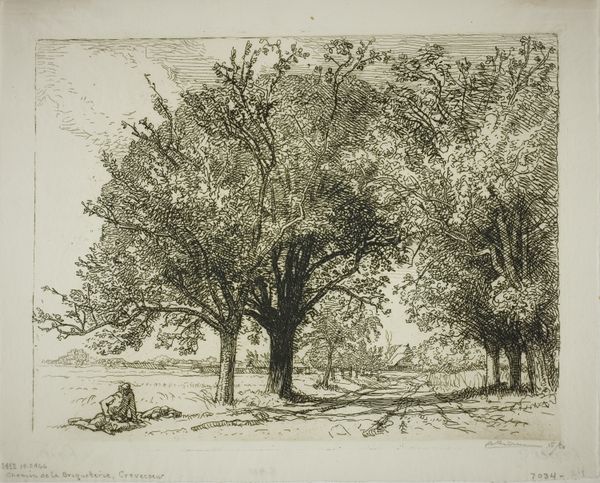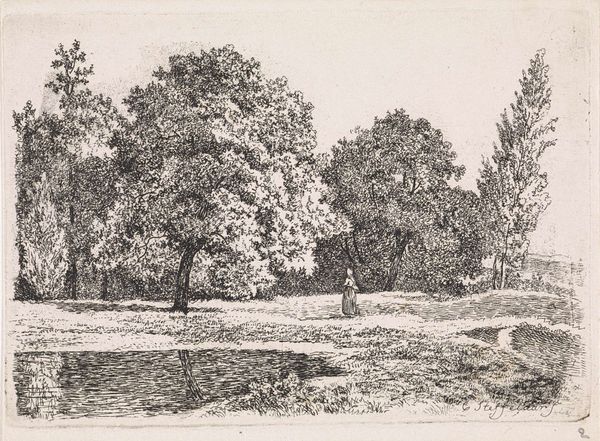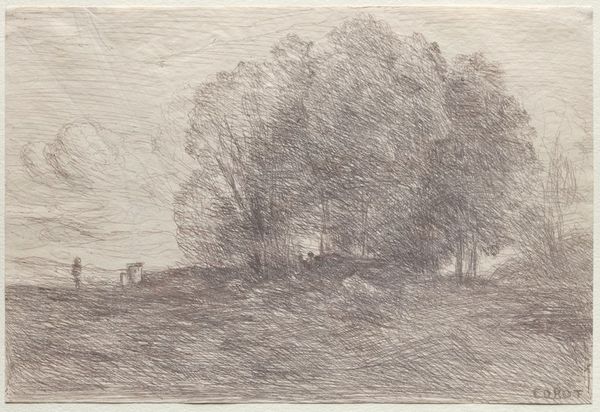
drawing, paper, ink, pencil
#
drawing
#
pen sketch
#
pencil sketch
#
landscape
#
etching
#
paper
#
ink
#
pencil
#
realism
Dimensions: height 270 mm, width 410 mm
Copyright: Rijks Museum: Open Domain
Editor: This drawing, "Wilgenboompjes en een hek," or "Willow Trees and a Gate," created between 1788 and 1841 by Abraham Johannes Ruytenschildt, uses pencil, ink and paper. I'm really struck by the simplicity and quietness of the scene. It feels like a fleeting moment captured in time. What do you see in this piece? Curator: The drawing is interesting from a formal perspective. The artist employs a limited palette of grays to create a sense of depth and atmosphere. Notice how the placement of the trees along a gentle curve leads the eye towards the gate, the focal point. What strikes you about Ruytenschildt’s use of light and shadow? Editor: I notice the shadows definitely give the scene a three-dimensional quality, and kind of add to that peaceful mood. The light seems soft and diffused, like an overcast day. Do you think the choice of medium affects that? Curator: Undeniably. Pencil and ink, especially in the form of a sketch, lend themselves to capturing nuances in light with more expressive potential than other media. Consider the hatching and cross-hatching techniques in defining form and texture – especially in the willow branches. How do those textures contribute to your sense of the drawing’s overall feeling? Editor: They make it feel more alive, I think. Less static. Like the leaves are rustling softly in the breeze. It's almost like a quick study of the landscape, capturing not just what he saw, but what he felt. Curator: Precisely. This work transcends simple representation and hints towards the artist's personal engagement with the scene. The simplicity isn’t simple, the subdued mood evokes greater feeling. The success of the image relies on the skillful modulation of light and shade and rhythmic design across the composition. Editor: That's a really interesting point; it seems like a simple scene at first glance, but now I see how carefully constructed it is. Curator: Indeed. By examining its formal elements we start to see it as less about a literal scene, and more of a record of artistic experience.
Comments
No comments
Be the first to comment and join the conversation on the ultimate creative platform.
